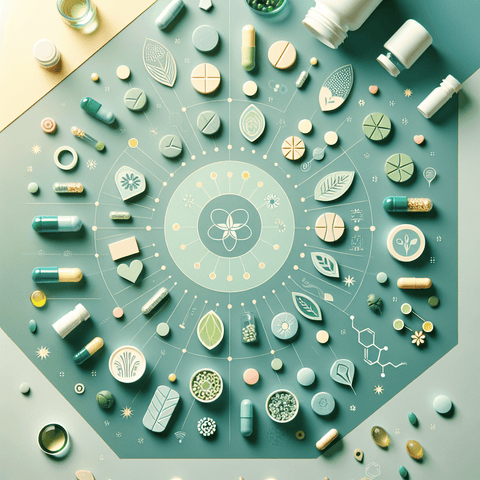Introduction
Vitamin D, often referred to as the “sunshine vitamin,” plays a vital role in maintaining optimal health. It is essential for calcium absorption, supporting immune function, bone strength, and even mental well-being. Many underestimate its importance until they’re faced with signs of deficiency — persistent fatigue, frequent illnesses, muscle weakness, or even depression. Surprisingly, vitamin D deficiency is widespread, especially in regions with less sunlight or among individuals with specific dietary and lifestyle habits.
Whether due to inadequate sun exposure, restrictive diets, gastrointestinal issues, skin pigmentation, or simply aging, many people find themselves with suboptimal levels of vitamin D. The good news? With proper guidance, vitamin D levels can be elevated quickly and effectively to protect overall health and vitality.
This comprehensive guide explores science-backed strategies to rapidly increase vitamin D levels. From understanding how supplements work to lifestyle shifts and dietary changes, we navigate through the safest and most efficient techniques. Moreover, we provide actionable steps and trustworthy sources to help you make informed decisions — including choosing high-quality supplements from Topvitamine’s vitamin D selection.
1. Understanding the Role of Vitamin D in Your Body (Vitamin D in Nutritional Supplements)
Vitamin D is a fat-soluble vitamin crucial for several physiological processes. Although called a vitamin, it acts more like a hormone in the body, influencing over 2,000 genes. It enhances calcium and phosphorus absorption in the gut, contributing to bone mineralization and skeletal health. It also supports immune function, reduces inflammation, modulates cell growth, and plays a role in neuromuscular function.
When the body lacks sufficient vitamin D, these vital functions are compromised. Deficiency can lead to rickets in children, osteomalacia in adults, reduced immune defense, and heightened risk of chronic diseases. Vulnerable populations include older adults, individuals with darker skin tones, those living in northern latitudes, and people with limited sun exposure or a diet low in vitamin D-rich foods.
Since synthesizing vitamin D through sunlight or consuming it through diet can be inconsistent, especially in colder seasons or urban environments, nutritional supplements provide a reliable alternative. Vitamin D supplements typically come in two forms: D2 (ergocalciferol) and D3 (cholecalciferol). Scientific studies indicate that D3 is the more effective variant for raising and maintaining serum 25(OH)D levels in the body.
High-quality vitamin D3 supplements, such as those available in the Vitamin D collection at Topvitamine, ensure bioavailability and quick absorption. Many formulations now pair vitamin D with K2 or magnesium to support calcium metabolism, maximizing the benefits without risking calcification in the arteries.
Second-generation supplements come in various innovative delivery formats — sprays, emulsified liquids, and micellized drops. These forms bypass some of the digestive challenges associated with fat malabsorption, making them ideal for those with gut disorders or malabsorption issues. Investing in a tested, science-backed supplement ensures quicker results and a safer route to restoring healthy levels.
2. Vitamin D deficiency remedies: Over-the-counter supplements and medical options
If you've confirmed a deficiency through a 25-hydroxyvitamin D blood test — the standard test for vitamin D status — acting swiftly and correctly is critical. While lifestyle improvements and diet support overall sufficiency, over-the-counter or prescription supplementation often offers the fastest route to correct a deficiency.
Vitamin D supplements come in several convenient forms: tablets, softgel capsules, oil-infused drops, sprays, and chewables. For those needing rapid correction, D3 supplements offering higher potency (from 5,000 to 10,000 IU per dose) are often recommended under physician supervision. Such high-dose interventions are especially useful for individuals who exhibit severe deficiencies or need to replenish stores rapidly.
The European Food Safety Authority (EFSA) places the tolerable upper intake level for adults at 4,000 IU/day. However, short-term medical regimens can exceed this amount legally and safely under healthcare guidance. Regular testing every 6 to 8 weeks ensures the approach remains effective and safe, adjusting dosages when necessary.
Combining D3 supplementation with nutrients like vitamin K2 and magnesium further enhances the vitamin's benefits. For example, vitamin K2 helps direct calcium to the bones and teeth instead of arteries, while magnesium supports the enzymatic conversion of vitamin D into its active form. [Explore Vitamin K supplements here] and [find magnesium options at Topvitamine].
One must also be wary of over-supplementation. Although rare, vitamin D toxicity can result in hypercalcemia (excessive calcium in the blood), which leads to nausea, weakness, and kidney complications. Staying within a medically supervised dosage plan and having regular lab monitoring helps avoid any adverse effects.
3. Natural vitamin D boost: Lifestyle changes and holistic approaches
Beyond pills, adopting intentional lifestyle changes empowers your body to naturally restore and maintain optimum vitamin D levels. These holistic approaches not only elevate vitamin D but also enhance overall wellness.
Start with managing time outdoors and optimizing your circadian rhythm. Spending 15 to 30 minutes daily in midday sunlight (between 10 a.m. and 2 p.m.) with arms and legs exposed supports natural synthesis in the skin. Melanin, the pigment that darkens skin, reduces vitamin D production, so darker-skinned individuals may require slightly longer exposure.
Regular physical activity improves hormone balance and supports better absorption of supplements. Weight-bearing exercises like walking, resistance training, and even yoga promote bone density and endocrine health, key systems influenced by vitamin D. Maintaining a healthy body weight also plays an important role; vitamin D is fat-soluble and gets stored in body fat, so excess fat can "trap" vitamin D and make less of it bioavailable.
Given the role of gut health in nutrient absorption, tending to your microbiome can impact how effectively your body utilizes fat-soluble vitamins. Consider probiotics and a diet rich in fiber to support healthy microbial balance. Gut dysbiosis can reduce uptake of vital nutrients including vitamin D.
Stress management contributes significantly to hormonal regulation, which can indirectly affect vitamin D metabolism. Cortisol, the stress hormone, has been shown to lower circulating vitamin D levels in chronic stress situations. Incorporating mindfulness, aerobic activity, and adequate sleep can reverse this effect.
Lastly, aligning your supplement intake with meals containing dietary fats enhances absorption. Vitamin D requires bile for digestion, which is secreted best when meals contain healthy fats from sources like avocados, nuts, or olive oil. Consider taking your supplement with your largest meal to benefit from optimal digestive uptake.
4. Vitamin D rich foods: Dietary strategies for quick improvement
Although diet alone may not fully correct a severe deficiency, it plays a crucial role in maintenance and support, especially when integrated with supplements and lifestyle changes. Fortifying your meals with vitamin D-rich items accelerates and sustains improved levels.
Top natural sources of vitamin D include:
- Fatty fish: salmon (especially wild-caught), mackerel, sardines, tuna
- Cod liver oil: one teaspoon can contain up to 1,360 IU of vitamin D3
- Egg yolks: from pasture-raised hens fed with vitamin D-enriched feed
- Beef liver and cheese: minor sources, but supportive when consumed regularly
In addition to natural foods, many dietary staples are fortified to support widespread sufficiency. These include cereals, dairy products, orange juice, and plant-based alternatives such as almond, soy or oat milk. When choosing fortified products, opt for those with D3 rather than D2 as the source, where possible.
Meal planning ideas to promote vitamin D intake could include:
- Breakfast: Oatmeal with fortified oat milk and scrambled eggs
- Lunch: Grilled salmon salad with olive oil dressing, side of fortified yogurt
- Snack: Fortified orange juice with a handful of almonds
- Dinner: Tuna steak with sautéed spinach and sweet potato
For added support, complement your nutritional strategy with omega-3s such as those found in DHA & EPA omega-3 supplements, which often coexist with vitamin D in fish and bolster cardiovascular health. Regular intake ensures that your efforts to increase vitamin D align with general well-being and anti-inflammatory support.
5. Sunlight exposure tips: Safe and effective ways to elevate vitamin D levels naturally
Sunlight plays a unique, irreplaceable role in vitamin D synthesis. When UVB rays strike the skin, they convert 7-dehydrocholesterol to pre-vitamin D3, which is then transformed into active vitamin D in the liver and kidneys. Just 10 to 30 minutes of sun exposure a few times a week can significantly elevate levels, particularly in spring and summer.
Tips for safe and effective exposure include:
- Expose larger skin surface areas: arms, legs, and torso without sunscreen initially (apply sunscreen after 10–30 minutes)
- Aim for midday exposure (solar noon), when UVB rays are most intense and efficient
- For fair-skinned individuals, 10–15 minutes is often sufficient; darker-skinned individuals may require up to 45 minutes
- Avoid exposure that leads to burning; frequent, short bouts are safer than prolonged sessions
Winter months pose a challenge as the Earth's tilt limits UVB availability in many regions. To overcome this, technologies like UVB lamps and sun simulators can help. These tools emit specific wavelengths of light that stimulate the vitamin D production pathway — making them invaluable in northern latitudes.
Glass blocks UVB rays, so time by a sunny window doesn’t count. Likewise, sunscreen inhibits UVB penetration, so initial exposure without SPF is advised with caution. Aim for a balanced approach: protect from overexposure but allow for natural synthesis where possible.
Those who are immunocompromised, have a history of skin cancer, or take photosensitive medications should consult with a healthcare professional before pursuing sunlight-based strategies intensively.
6. Vitamin D supplementation: Choosing the right supplement for rapid increase
Choosing the right vitamin D supplement requires consideration of a few core factors: form (D2 vs. D3), dosage, delivery method, bioavailability, and quality assurance. For quick increases, opt for cholecalciferol (D3) over ergocalciferol (D2), as multiple studies confirm superior performance in raising serum levels.
Products with integrated support nutrients — especially K2-MK7 and magnesium — enhance calcium handling and enzyme activity. You can find such synergistic formulations reliably within the Topvitamine Vitamin D range.
For rapid restoration in deficient individuals, high-dose options (5,000–10,000 IU) may be recommended under clinical guidance. Some may require prescription-only loading doses of 50,000 IU taken weekly or biweekly for a month. After this, maintenance doses ranging from 800 to 2,000 IU support long-term sufficiency.
Look for supplements that list third-party testing or Good Manufacturing Practice (GMP) certifications. Avoid products with artificial additives or allergens if you have sensitivities. Delivery forms such as sprays or soft-gels with oil can enhance absorption and increase compliance due to user-friendliness.
Consistency matters: missing doses will slow progress. Set reminders or integrate supplement intake into existing habits like brushing your teeth or breakfast. Take vitamin D with your fattiest meal to boost absorption and tag-team your efforts with other healthful habits previously discussed.
Conclusion
Increasing your vitamin D levels quickly and safely requires a coordinated approach. Supplements, nutrient-rich foods, lifestyle changes, and sunlight exposure all play essential roles. Begin with accurate testing to determine your starting point. From there, apply a personalized plan — combining reliable supplements with supportive diet and natural habits — to raise your levels efficiently.
Choose quality formulations backed by scientific evidence, such as the trusted collections on Topvitamine’s vitamin D page. Engage with your healthcare provider throughout this journey, especially when navigating high-dose solutions or managing pre-existing conditions.
Ultimately, the key lies in creating a sustainable routine that promotes lasting sufficiency through synergy, safety, and personalization. Tune into your body, monitor your progress, and enjoy the rewards of balanced, whole-body well-being.
Q&A Section
Q1: How fast can I increase my vitamin D levels?
With high-dose supplementation under medical supervision combined with sunlight and dietary optimization, levels can increase substantially within 4 to 8 weeks. Individual factors such as body fat, baseline levels, and genetic variation may influence results.
Q2: What’s the best form of vitamin D supplement?
Vitamin D3 (cholecalciferol) is more effective than D2 and is the preferred form. Micellized drops and oil-based softgels offer optimal absorption.
Q3: Is it safe to take 10,000 IU of vitamin D daily?
While EFSA sets a safe upper limit at 4,000 IU/day, short-term higher doses may be medically appropriate. Only take 10,000 IU daily under professional guidance and with regular monitoring to avoid toxicity.
Q4: Can I get enough vitamin D from food alone?
It’s challenging to achieve sufficient vitamin D intake through food alone. However, combining dietary sources with sunlight and supplementation offers the most comprehensive coverage.
Q5: Are there any side effects of vitamin D supplementation?
Side effects are rare when taken within recommended limits. Excessive intake may cause hypercalcemia. Symptoms include nausea, fatigue, and kidney issues, emphasizing the importance of medically guided use.
Important Keywords
vitamin D quick boost, how to increase vitamin D fast, vitamin D supplements, vitamin D deficiency remedies, natural vitamin D sources, vitamin D rich foods, sunlight for vitamin D, best vitamin D supplement, D3 vs D2, vitamin D and immune health, Topvitamine, vitamin D testing, high dose vitamin D, vitamin D fortified foods, vitamin D for bones, magnesium and vitamin D, K2 and vitamin D synergy



